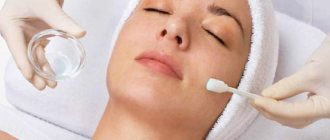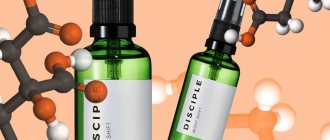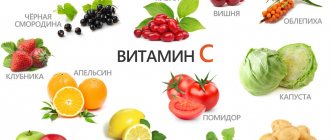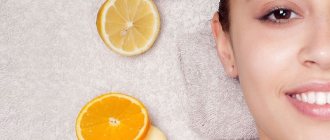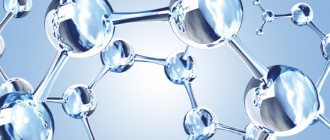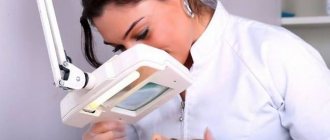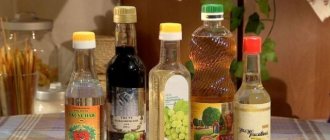Female representatives have always been and are worried about their appearance. It must be irresistible and impeccable so that a girl or woman feels comfortable. And first of all, the emphasis is on the skin of the face: it should be perfect, without a hint of flaws. But with age and for a number of other reasons, skin changes occur, which can manifest themselves in the form of age spots.
The most common causes of uneven pigmentation:
- disruption of metabolic processes in the body;
- improper functioning of the gastrointestinal tract and liver disease;
- postpartum consequences;
- solarium and excessive sun exposure;
- age over 40;
- avitaminosis;
- consequences of acne.
Unattractive spots are not only necessary, but also possible to fight. How to get rid of age spots on the face and prevent their appearance, we will consider in this article.
The most effective solutions
Before taking measures to combat excessive pigmentation, you need to find out the main reason that contributed to its appearance. To do this, you should contact an experienced dermatologist and only then begin treatment.
Visiting a cosmetologist and performing salon procedures to get rid of it give good results. Salons offer the client the following procedures:
- microdermabrasion;
- chemical peeling;
- laser therapy.
The first method is to use microcrystals, which remove the upper layer of the dermis.
It will take several such procedures for clear and healthy skin to form in place of dark spots. This method of elimination is effective only for superficial pigmentation, which has not yet had time to go into the deeper layers of the dermis. Chemical peeling involves the complete removal of the top layer using acids. It is an aggressive treatment method.
In case of old pigmentation, laser therapy will be effective. Laser light destroys melanin, which is the culprit behind the formation of spots.
But many of the methods listed above are not affordable or simply not suitable. Therefore, we will consider more accessible and loyal methods.
Ways to combat hyperpigmentation at home:
- manual peeling;
- acid treatment;
- home remedies.
Who is recommended for azelaine peeling?
Peeling can eliminate seborrheic dermatitis, melasma, acne and its consequences, demodex, rosacea. This exfoliation is used for inflammation of hair follicles, ingrown hairs, to combat photoaging and pigmentation of any nature, and as a preparatory step for deeper facial cleansing (laser resurfacing, dermabrasion).
One cleaning gives a superficial and short-term effect. For a positive stable result, up to 12 courses with a break of 2 weeks may be required. The duration of the course is prescribed by a cosmetologist depending on the condition of the skin.
After peeling, the face becomes smoother and more uniform, its color improves, and redness caused by rosacea or rosacea decreases. The epidermis is cleansed, oily shine and comedones disappear, acne and its manifestations completely or partially disappear.
Treatment with acids
The way acids act on the skin is similar to peeling. They also gently remove the top layer of skin, giving life to new, healthy cells. Acids can be found in products that contain:
- kojic acid;
- azelaic acid;
- soy;
- calcium;
- arbutin;
- hydroquinone;
- salicylic acid;
- retin.
Many of these substances are found in serums, creams, scrubs, peeling products and tonics. They can be purchased at a store or pharmacy without a prescription.
special instructions
It is not recommended to apply salicylic acid preparations to birthmarks, warts in the genital or facial area, or pilar warts. When treating children, it is not recommended to treat several skin surfaces at the same time. Children under 3 years of age are not recommended to use salicylic acid and its derivatives.
During pregnancy, it is allowed to use products containing salicylic acid to treat calluses only on a limited surface.
The mucous membranes must be washed with plenty of water if even a small amount of salicylic acid comes into contact with them.
It must be taken into account that it is possible to increase the absorption of salicylic acid in some skin diseases, especially those that occur with hyperemia, inflammation or weeping eczematous skin lesions: dermatitis, psoriasis, eczema, ichthyosis.
Home Remedies
Masks and decoctions prepared using natural ingredients at home can give good results with regular use.
The use of citrus fruits to combat pigmentation
All citrus fruits contain ascorbic acid, which can eliminate dead cells, brighten and even out the complexion. Regularly rubbing problem areas with orange, lemon or lime juice will help get rid of age spots.
You can use some recipes that suit you best.
Lemon and honey. Add lemon juice to honey. Leave the applied product on for about 20 minutes. The mask not only brightens, but also nourishes the skin. Regular use helps to reduce the number of stains and prevent recurrence.
Citrus and salicylic acid. These components are used to prepare a scrub at home. Honey is mixed with lemon juice and crushed aspirin is added. The product is not recommended to be used more than 2 times a week due to its aggressive effects.
Lemon juice and milk powder. The components are mixed and a little water is added to form a homogeneous thick mass. Used as a scrub.
Cucumber with protein and lemon juice. Grated cucumber is combined with protein and lemon juice is added. Regular use helps reduce pigmentation.
With bran, yogurt and citrus juice. All components are mixed, you can also add parsley to them.
Parsley as a remedy for age spots
Many people know that parsley contains substances that have a whitening effect. This means that a natural product can give good results in the fight against age spots. For the whitening procedure, masks and decoctions containing leaves or roots of the plant are suitable. Parsley and dandelion mask. The crushed raw materials are poured with mineral water. After 12 hours, the components are applied to problem areas for half an hour. The product can be used up to 2-3 times a week.
Parsley with honey. The mixture of components is kept on the skin for up to half an hour. You can use both leaves and roots for the mask. The result will appear after just a few procedures.
Parsley can be used as a whitening agent without additional components. The crushed plant is applied for half an hour, like other masks. You can add a little potato starch to the raw materials.
With kefir and parsley. Kefir or other fermented milk product is combined with crushed plant. The product not only whitens, but also cleanses pores well.
Other means
At home, vitamin E may be suitable for combating age spots. Regular application of it to problem areas gives good results over time - the skin begins to lighten.
Carrot masks can also be used to mask problem areas, giving the skin a self-tanning effect. Skin tone is evened out and spots become almost invisible. It is best to use additional ingredients to prepare a carrot mask, such as honey or egg yolk.
Aloe masks or lotion work well. The plant has a lightening effect, which means it can get rid of hyperpigmentation. You can also use red onions, as they are less aggressive. The bulb of the plant is used to rub the skin of the face. The effect will be the same as when using lemon masks.
You can use a more gentle fruit - papaya. Rubbing or masks made from papaya can whiten the skin, make it lighter, even out the complexion and get rid of problem areas, thanks to the content of organic acids and ascorbic acid in the composition.
Salicylic acid - descriptive characteristics
known to many, it is often present in the home medicine cabinet.
This drug brings many benefits and is cheap. This pharmacological agent is used to treat many diseases, but, like any medicinal drug, it also has its contraindications for use. It was first obtained from the bark of the Salix L. willow, and then the German chemist Kolbe managed to synthesize salicylic acid in a simple way, which is still used today. Initially, salicylic acid was used to treat rheumatism, but with the advent of modern antirheumatic drugs it is used only as a means for external use. Refers to non-steroidal anti-inflammatory drugs.
https://www.youtube.com/watch?v=y63bgDo7z3c
The active substance is orthohydroxybenzoic acid.
The product is available in the following dosage forms:
- Salicylic acid 1% solution, 25 and 40 ml bottles.
- Salicylic acid 2% solution, 25 and 40 ml bottles.
- Salicylic ointment 2%, 25 g jar.
- Salicylic acid alcohol solution 1%, bottles 25 and 40 ml.
- Salicylic acid alcohol solution 2%, bottles 25 and 40 ml.
- Salicylic acid alcohol solution 3%, bottles 25 and 40 ml.
- Salicylic acid alcohol solution 5%, bottles 25 and 40 ml.
- Salicylic acid alcohol solution 10%, bottles 25 and 40 ml.
- Salicylic Vaseline 1%, tube 30 ml.
- Salicylic-zinc paste (Lassara paste), 30 ml jar.
Salicylic acid is included in many combination products used externally: Diprosalik, Belosalik, Viprosal, Camphocin, Zinkundan, Lorinden A, in lotions and creams.”
“, shampoos, tonics, gels, pencils and other forms.
Salicylic acid has the following formula: C
(OH) – CO
N. It is a representative of the group of aromatic hydroxy acids. In adjacent positions of the benzene ring it has an OH group, like phenol, and a COOH group, like benzoic acid. This compound is widely distributed in nature.
Salicylic acid is recommended for external use as a distracting, locally irritating, anti-inflammatory, keratoplasty, keratolytic, drying and antiseptic agent.
At sufficient concentration, salicylic acid is capable of coagulating microbial proteins. When used, it has a pronounced effect on sensitive nerve endings. In addition, it improves trophism and reduces pain.
The product has the ability to suppress the secretion of not only sebaceous but also sweat glands. When using low concentrations, a keratoplastic effect occurs, and when high concentrations of the solution are used, a keratolytic effect of the drug occurs. There is weak antimicrobial activity.
Like all non-steroidal anti-inflammatory drugs, salicylic acid and its derivatives have vasoconstrictor, antipruritic and anti-inflammatory effects at the site of the lesion.
Induces the release of phospholipase inhibitors, while inhibiting the biosynthesis of inflammatory mediators. Mainly narrows blood vessels, improving the structure of their walls, as well as cell membranes. Causes gentle exfoliation of the dead layer of skin, thinning of the stratum corneum, cleansing of the pores and outflow of sebaceous secretions.
Recommendations
Whitening masks and products are best used in autumn and winter, when the sun is not yet so aggressive. Using products during one of these periods may result in skin burns.
Procedures are carried out at night so that the skin can recover before sunlight appears.
Before using any product, make sure there is no allergic reaction to it.
Only regular use and long-term treatment can give good results. Therefore, you should not abandon the course after several procedures.
Since water promotes a faster regeneration process, you should drink it as much and as often as possible, but not only during treatment.
If you decide to have the procedure done in a salon, be sure to check the professionalism of the cosmetologist who will perform facial cleansing.
Salicylic acid: for warts
Salicylic acid gives good results as a remedy for warts. It perfectly softens the tissues that make up the wart, and after that the formation is easy to remove on your own. In addition, salicylic acid increases local immunity to fight pathogens and prevent the appearance of new warts. There are several remedies for getting rid of warts:
- salicylic ointment,
- salicylic acid solution,
- plaster soaked in solution.
The effectiveness of the product depends on the percentage of salicylic acid in it. As a rule, in wart preparations this figure ranges from 10 to 60%; higher concentrations can damage the skin.
Contraindications
Salicylic alcohol, like any medicine, has a number of contraindications for use. It cannot be used:
- in case of hypersensitivity to the components of the composition;
- during pregnancy and lactation;
- with liver and kidney failure;
- if you are allergic to salicylic acid;
- children under one year old;
- if there are open wound surfaces;
Particular attention should be paid to the prohibition of use of the drug by pregnant and lactating women. Since the acid penetrates deeply into the skin and is quickly absorbed by epithelial cells, it can cause irreparable harm to the baby. You should not use not only an alcohol solution, but also any ointments, lotions and gels containing salicylic acid, as it very easily passes through the placenta. A high concentration of the substance can lead to anemia in the child and the development of cardiovascular pathologies. There is also a risk for the woman in labor - the use of the drug can provoke painful contractions or a decrease in labor activity.
Composition and release form
According to the instructions for use, salicylic alcohol is a synthetic product that consists of two components: ethanol and salicylic acid dissolved in it in varying concentrations. Typically, the solution contains 70 percent ethyl alcohol and 1 or 2 percent acid. The antiseptic dissolves completely in ethanol, and as a result a concentrated drug with pronounced medicinal properties is formed. The solution is packaged in dark glass bottles with a capacity of 25 and 40 milliliters.
Products based on phenolic acid
To treat acne, age spots, blackheads and other skin lesions, not only an alcohol solution can be used, but also other products made on the basis of salicylic acid:
- Lotions. The advantage is that they do not contain alcohol, and therefore are less drying to the skin. You need to choose a lotion according to your skin type.
- Ointments. These products are very effective, but require careful use due to the likelihood of severe drying and skin burns.
- Gels. Used for daily cleansing of the face from fat and excess dirt.
- Peeling products. Contains salicylic and glycolic acid, the combination of which allows you to achieve deep cleansing. However, you must follow the instructions to avoid unpleasant consequences.
Treatment of fungus, ringworm and calluses
In accordance with the instructions for use, salicylic alcohol for the treatment of lichen and fungal infections on the body should be used only as part of complex therapy.
Since the drug has an anti-inflammatory and bactericidal effect, it is often used to eliminate nail fungus. First, you should steam the nail plate using a vinegar, soap-soda or salt bath. This will take about fifteen to twenty minutes. This procedure will help the antiseptic to quickly reach the source of infection and neutralize pathological microorganisms. After the bath, the nail must be cleaned and dried well, and then apply salicylic alcohol to it. You can get rid of the fungus if you repeat the procedure twice a day for at least a month. In some cases, longer therapy is needed (up to six months).
The drug also effectively fights the manifestations of various types of lichen. For treatment, a 2 percent solution is applied two to four times a day to the affected area. To prevent the skin from drying out, after using the product, apply a thin layer of nourishing cream on top of the treated area. When treating lichen, salicylic alcohol shows better results when combined with sulfur ointment and tar.
The antiseptic solution removes dead keratinized skin cells quite well, so it is suitable for treating wet calluses and corns. The formations are impregnated with salicylic alcohol, softening them, and then the skin is cleaned with a stiff brush or pumice stone.
